Intelligent Waste Sorting and Processing Equipment - Windsifter
1). Working principle
Windsifter use the principle of aerodynamics, under the action of airflow, different components in the garbage are separated according to differences in density, shape, etc. Generally, light materials with low density, such as paper and plastic film, will be carried away by the airflow, while heavy materials with high density, such as stone and metal, will sink due to gravity, thus achieving classification.
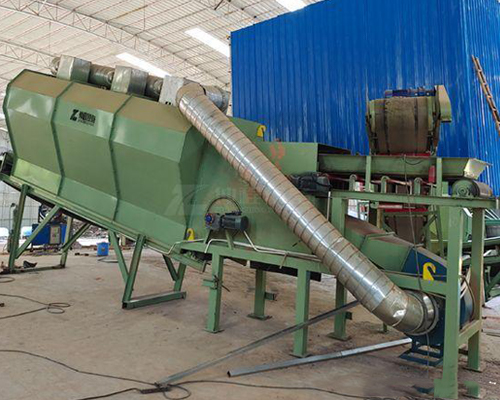
2). Main structure
Windsifter usually is composed of feeding device, air separation chamber, fan, air duct, discharging device and other parts. The feeding device is responsible for evenly conveying garbage into the air separation chamber; the air separation chamber is the core area, where garbage is sorted by airflow; the fan generates airflow to provide power for sorting; the air duct is used to guide the direction of airflow and control wind speed; the discharging device collects the light and heavy materials after sorting respectively.
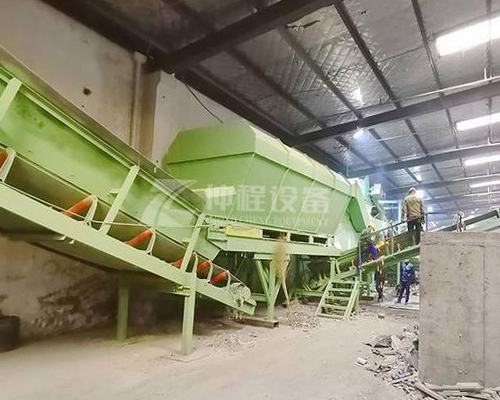
3). Functional features
1. Efficient sorting: It can process a large amount of garbage quickly and efficiently, and can process several tons of garbage per hour, greatly improving the efficiency of garbage treatment.
2. Accurate classification: It has a good sorting effect on garbage of different densities and shapes, and can accurately separate recyclables and inorganic substances in the garbage, thereby improving the resource recovery rate.
3. Environmental protection and energy saving: It adopts physical sorting methods, does not require chemical agents, and reduces secondary pollution. And the energy consumption during the operation of the equipment is relatively low, which meets the requirements of environmental protection and energy saving. The equipment is manufactured with environmentally friendly materials to reduce the emission of pollutants such as noise and dust during the operation of the equipment and improve the working environment.
4. High degree of automation: Equipped with advanced control systems and sensors, it can realize automatic operation and monitoring, reduce labor costs and labor intensity, and improve the stability and accuracy of sorting.
5. Energy-saving design: By optimizing the structure and operating parameters of the windsifter, using high-efficiency energy-saving fans and motors, reducing energy consumption, improving energy utilization efficiency, and meeting environmental protection and energy saving requirements.
6. Miniaturization and modular application
Miniaturization: Research and develop small-scale garbage windsifter, suitable for small garbage disposal sites, communities, etc., to meet the garbage disposal needs of different scenarios and improve the applicability and flexibility of the equipment.
Modularization: The modular design is adopted to facilitate the installation, disassembly, transportation and maintenance of the equipment, reduce the equipment cost and maintenance difficulty, and improve the scalability and maintainability of the equipment.
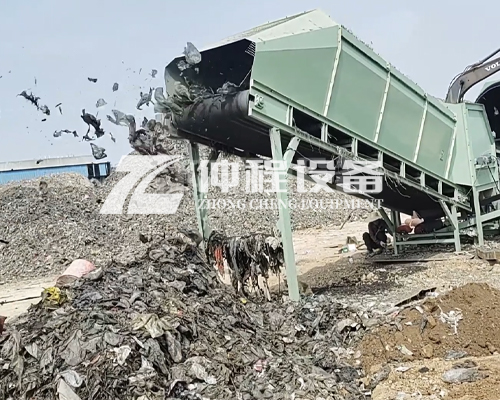
4). Application field
Widely used in urban domestic waste treatment plants, construction waste treatment sites, industrial waste treatment centers and other places, to pre-treat and classify various types of solid waste, and provide convenience for subsequent recycling, incineration, landfill and other treatment links, efficient energy saving and environmental protection
5). Model information
| Windsifter 800 | Windsifter 1200 | Windsifter 1600 | |
| Feeding Belt Width | 800mm | 1200mm | 1600mm |
| Air volume | 8000-19000 m³/h | 12000-29000 m³/h | 15000-35000 m³/h |
| Full pressure | 2500Pa | 2500Pa | 2500Pa |
| Power | 38kw | 42kw | 55kw |
| Throughput | 20-30 m³/h | 30-50 m³/h | 50-70 m³/h |
-
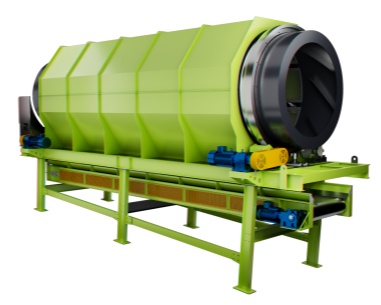 Trommel screenTrommel screen, also known as drum screens, are widely used in various industries for sorting and separating materials.Get Quote
Trommel screenTrommel screen, also known as drum screens, are widely used in various industries for sorting and separating materials.Get Quote -
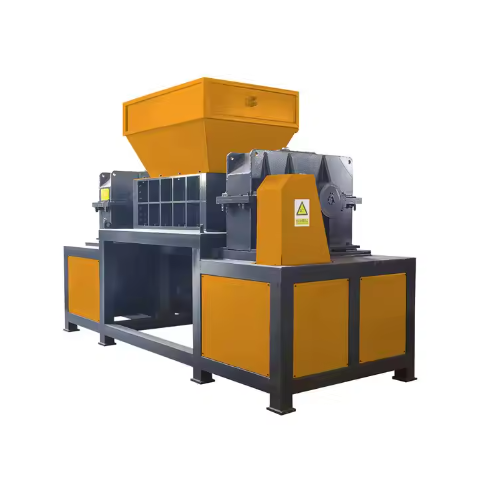 Crop straw double shaft shreddApplications:Biomass Energy Production: Shredded straw can be used as a feedstock for bioenergy plants to produce electricity or heat.Livestock Feed: Reduced-si...Get Quote
Crop straw double shaft shreddApplications:Biomass Energy Production: Shredded straw can be used as a feedstock for bioenergy plants to produce electricity or heat.Livestock Feed: Reduced-si...Get Quote -
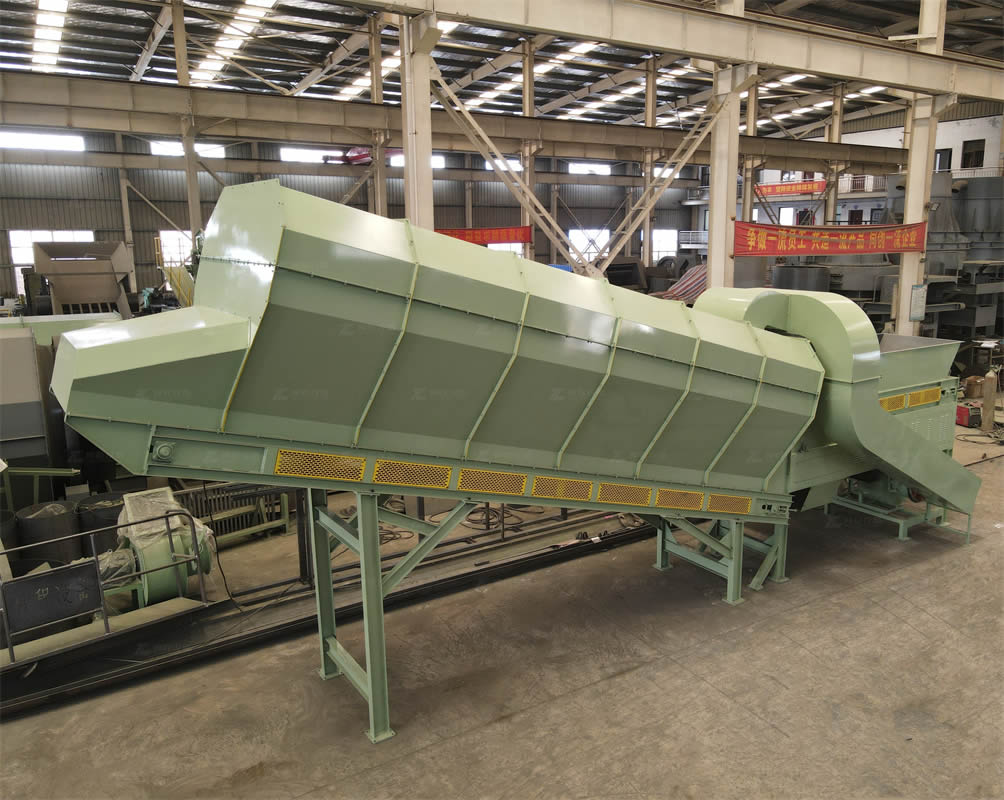 Zhongcheng Air Drum SeparatorAir drum separators effectively separate lightweight materials (e.g., plastics, paper) from heavier materials (e.g., metals, glass). This high efficiency is cru...Get Quote
Zhongcheng Air Drum SeparatorAir drum separators effectively separate lightweight materials (e.g., plastics, paper) from heavier materials (e.g., metals, glass). This high efficiency is cru...Get Quote
-
2023-01-12Disc ScreenDisc screen, also known as a disc scalping screen, is a mechanical device used to separate materials based on size. It is commonly used in industries such as wa...
-
2023-01-12Waste FeederWaste feeder was specially designed to optimize municipal solid waste sorting systems. The Drum Feeder ensures that your sorting system, baler or shredder has a...
-
2024-08-07Efficient Material Separation with Bounce ScreensThe ballistic separator is an important equipment with separation function designed for the sorting of inorganic particles in the coarsely crushed waste.
-
2025-04-21Compact Copper Cable Granulator MachineThe compact copper cable granulator machine is a device used to recycle waste wires and cables. It separates the copper wire from the plastic sheath by crushing...
-
2024-07-16Drum screen garbage processing machine for msw recyclingManaging municipal solid waste (MSW) efficiently is crucial for urban areas. Drum screen garbage processing machines are a game-changer in this field. They ensu...



